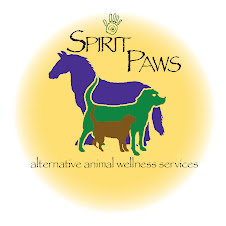Once again I have to thank my furry children for showing me the way! When I first had my two girls, Addie and Maggie, I started them off on what I thought was really good food, Science Diet. The vet had recommended it and I would say for the first 7 or 8 years of their life they were on nothing but that. They did fine on the food for the longest time.
I then began working at a natural pet food store and began to learn about animal nutrition. I looked at what should and should not be in their food. I found the stuff in Science Diet really wasn't giving them the nutrition they needed so I switched to a higher quality dry food. I did one of the Grain free kibbles that is out there. They did really good on the food and as I continued to learn more and more I continued to upgrade their food until I began feeding nothing but a canned and raw diet. I can't tell you what a difference it has made for them. Now would I feed all raw if I could, yes, but it can be a little expensive for those on a limited budget that is why I split between the two. If you were too look at my girls they do not look their age.
Which brings me to what I learned. In doing the research about the nutritional affects on the mind and body of animals I took a look at what I was feeding myself. I began reading labels like I read the labels on the canned and raw foods I was feeding the girls. I was floored to see some of the same really bad ingredients that are often found in the lower brand pet foods were in mine.
Some yummy things like BHT - Butylated Hydroxytoluene - a crystalline phenolic antioxidant, C15H24O, used to preserve fats and oils, especially in foods. Banned from human use in many countries but still permitted in the US. A possible human carcinogen, apparently carcinogenic in animal experiments also. The oxidative characteristics and/or metabolites of BHA and BHT may contribute to carcinogenicity or tumorigenicity. (Cancer)
BHA - Butylated Hydroxysanisole - a white, waxy phenolic antioxidant, C11H16O2, used to preserve fats and oils, especially in foods. It is banned from human use in many countries but still permitted in the US. A possible human carcinogen, apparently carcinogenic in animal experiments also. The oxidative characteristics and/or metabolites of BHA and BHT may contribute to carcinogenicity or tumorigenicity. (Cancer)
And my personal favorite Propylene Glycol. It is a colorless viscous hygroscopic liquid used in antifreeze solutions, in hydraulic fluids, and as a solvent. It is used as humectant in semi-moist kibble to keep it from drying out. Probably tastes good too!
I continue to thank my babies everyday for making me a better person in spite of myself. I hope they never stop teaching and I hope I never stop learning from them and all the animals of the animal kingdom.
Happy Trails,
Sherry
Soul Aura Private Readings with Adele
-
Soul Energetic Aura Private Readings
by Admin on September 17, 2014 in Newsletters
If you have never had a Soul Aura Private Reading then you need to check...
10 years ago






No comments:
Post a Comment